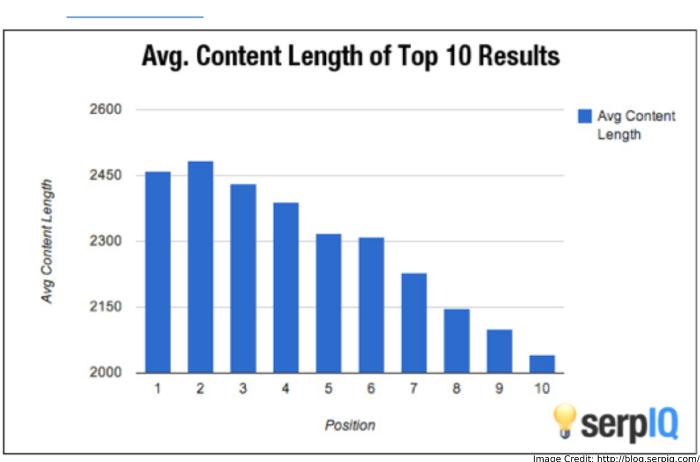Do you want to know a frequently asked question on the popular question and answer site Quora.com?
“How do I get traffic to my blog from search engines in such a competitive market?”
Does having search engine users click your link sound impossible considering the competition on the Internet today?
Boosting your search traffic is definitely possible. Actually, if you follow these tips for SEO Hacks, you can easily boost your rankings in search engine results pages (SERPs).
Best Tips For SEO Hacks
1. Create Content Search Engine Users Are Interested In Reading. Check with Buzsumo.com[1]and Google Trends[2] to see what topics interest search engine users. You can build on the popularity of those posts by creating better content.
2. Use Free Tools To Help You Find Keywords. These should be keywords with high search volume and low competition for internet readers. Many free tools[3]exist if you are operating on a tight budget. I recommend KW Finder[4] and SEMrush[5].
3. Use Paid Tools To Help You Find Keywords. If you do have a budget, Ahrefs.com[6]is the best in the world. Their reputation precedes them. Any SEO metric you could ever desire can be found at Ahrefs. Ahrefs updates analytics in real time.

4. Adjust For Commercial Intent Keywords. Since voice search[7]tools like Google Now have been developed, search engine users are speaking their requests instead of typing them. For example, someone might ask, “How do I find free longtail keyword tools?”
5. Use Longtail Keywords. After reading the last tip, you can see that the keywords you use to tag your posts need to be longer. Content creators now tag their posts with keyword phrases. Keyword phrases at least 4 words long are considered “longtail.” “Free longtail keyword tools” is considered a longtail keyword.
6. Avoid Keyword Stuffing Years ago, content creators would be so determined to get their content found on Google and other search engines, they would “keyword stuff.”
The content did not read naturally since every few words the keyword could be found. Content creators did not care as long as they boosted their search engine rankings. However, Google cared.
Google wants to show quality writing to its users. Today, Google will penalize you for “keyword stuffing” by putting you lower in the results pages. An important question is how much is too much? The more words in your post, the more your keyword can be found. I recommend the plugin Yoast SEO.
It will give you the green go-ahead light if you have not overly stuffed your post with your keyword. Yoast SEO is a free plugin.

7. Vary Your Keywords In Your Subheads.One way to boost the probability of having your posts found in Google’s SERPs is by putting your keyword in your subhead. However, content creators have tried to avoid “keyword stuffing” by using LSI Keywords.
These are synonyms for the keywords. Google’s bots have an easier time understanding your content when they crawl your posts if you use synonyms for your keywords.
8. Optimize Your Post And Pictures With Your Keywords. Tag your post with your keyword. You should put your keyword in the following places: near the front of your headline, in your URL, in the first 100 words of your post, in the last sentence of your post, in your meta description, and in your image tags.
You can and should put your keyword in your Heading 2 if you have not used your keyword so often you might be guilty of “keyword stuffing.” If so, then use a synonym for the keyword in your Heading 2.
9. Make The Article Headline And SEO Headline Different. Your goals are at odds. Your goal is to have a clickable headline– a headline so enticing people will want to click your link to read your headline. However, you have another goal– to have Google show your post to its users. These two headlines can vary.
For example, my post about 50 optins website creators can offer their readers in exchange for signing up had the following headline: How to Easily Get New Followers with Optins: an Update. According to the CoSchedule Headline Analyzer[8], people would be likely to click my headline.
However, I needed my keyword Optins near the front so the post would be found in search engines. I made the SEO title: Optins: How to Easily Get New Blog Followers: Update.

10. Make Your Post At Least 2,000 Words.Google views in-depth content as quality content and is more likely to show your detailed content to its users. Creating in-depth content further increases your chances for boosts in search rankings.
People like to link to guides and other in-depth content. Links to your site tell Google and other search engines your content is quality and they will be more likely to show your content to their users. This technique is called “off-site SEO.”
Read More: Google Voice Search To Bring About The End Of SEO?
Bonus Tip: Improve on your successes. Check websites like Hubshout.com[9] to find your positions in search engines. Use different keywords for similar content. In this way, you can rank for many articles about the same topic.
.
Takeaways
- Use keywords that are high in interest but low in competition for readers.
- Tag your post and images with those keywords.
- Avoid keyword stuffing through such techniques as using LSI Keywords.
- Create in-depth articles such as guides and tutorials.
Wrapping Up
In closing, you can use these tips as a checklist. Visibility and ultimately sales can be yours if you follow these hacks.




